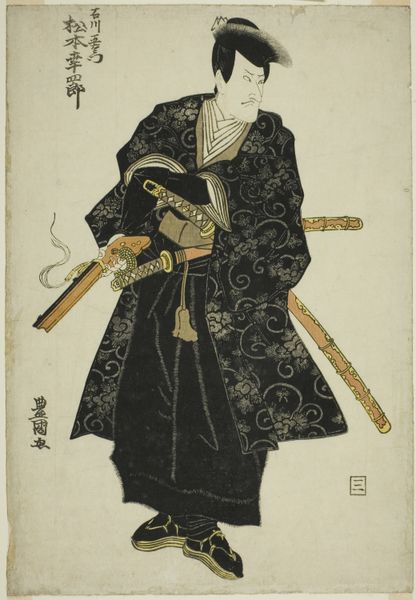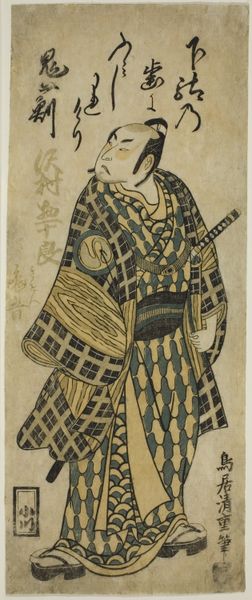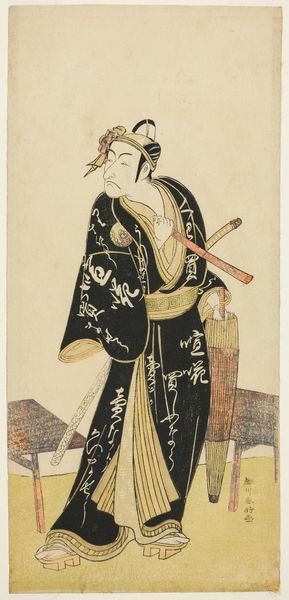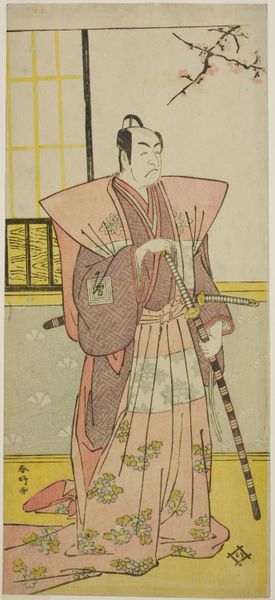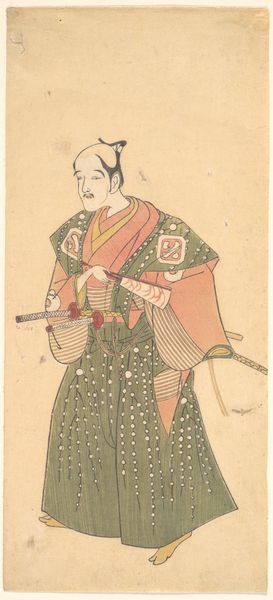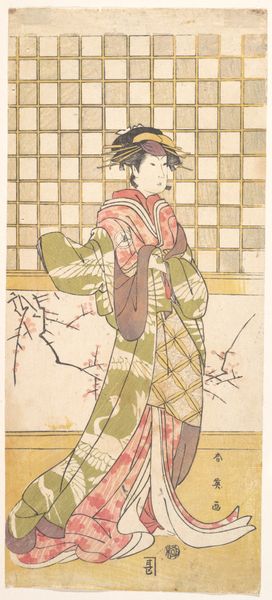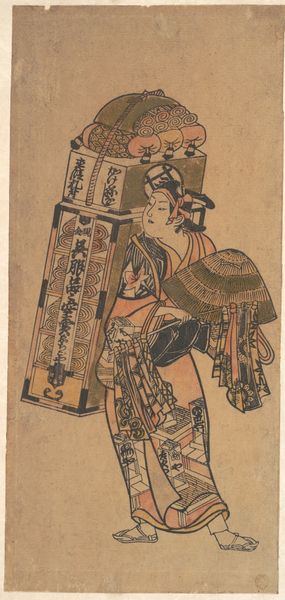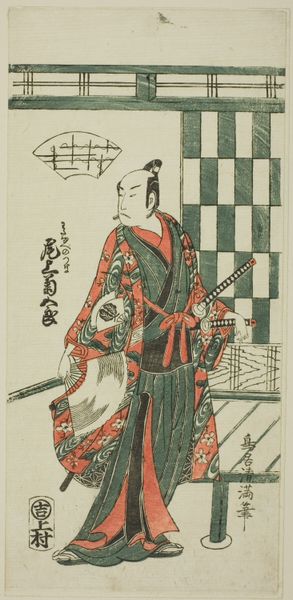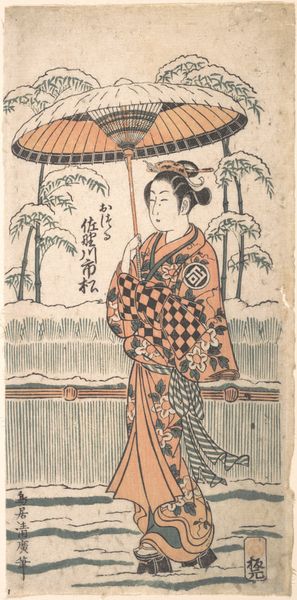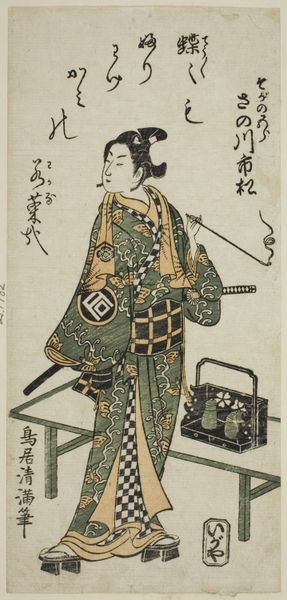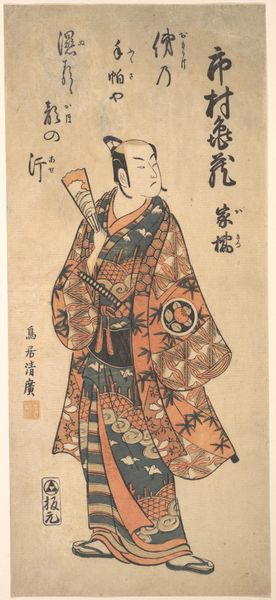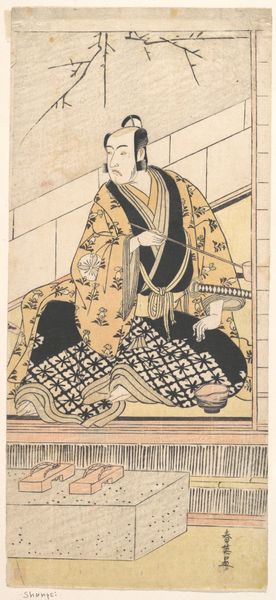
gelatin-silver-print, photography, gelatin-silver-print
#
portrait
#
gelatin-silver-print
#
photography
#
orientalism
#
gelatin-silver-print
#
genre-painting
Dimensions: 9 1/2 x 7 7/16 in. (24.13 x 18.89 cm) (sheet)9 x 13 x 1 1/2 in. (22.9 x 33 x 3.8 cm) (album, closed)
Copyright: Public Domain
Curator: Here we have an untitled gelatin-silver print dating from the late 19th to early 20th century, currently held in the Minneapolis Institute of Art collection. Editor: It's immediately striking; there’s an arresting stillness and dignity to the subject's gaze. It's also quite romantic. It evokes a sense of quiet domesticity but also, perhaps, of enforced roles. Curator: Yes, there's a posed formality characteristic of portraiture from that period, but within the conventions of the era, she seems grounded and assured. I find compelling the layering of symbols in the head covering, the striped kimono, the objects she holds. To me they speak to ritual and custom. Editor: I agree about the posed formality. Works categorized within 'Orientalism' often flattened diverse cultures into a singular, exotic "other." How can we contextualize this portrait so that it speaks back to that history? I notice the bare feet. The Western gaze so often exoticizes these types of images. I see vulnerability—an unequal power dynamic is inherent in the encounter of the photographer and subject. Curator: Those are very valid considerations, and the artist is, after all, unknown, so the circumstances under which this was created and viewed remain obscure. And yet, she projects authority, standing firm despite the context. The photograph could depict various identities or stations – is she a worker? An attendant? The small teapot she holds, along with what looks to be offerings of food on the platter, could be culturally significant clues. These items speak of attentiveness, nurturing, maybe hospitality. Editor: Her presence, in itself, counters the erasure often experienced by women and people of color in art history. Despite the possible context of Orientalism and forced posing, her unwavering look pierces through time, challenging viewers even today to reckon with her presence and perspective. Curator: Absolutely, she serves as a strong visual emblem of perseverance in the face of an unbalanced representation. Her presence lingers far longer than the assumed colonial perspective does. Editor: I see this image as a historical artifact but also a testament to resilience and dignity under oppressive regimes of power. Curator: A poignant conclusion, capturing the power of photographic image and complex meanings of art to engage, provoke, and remain thought-provoking across generations.
Comments
No comments
Be the first to comment and join the conversation on the ultimate creative platform.

